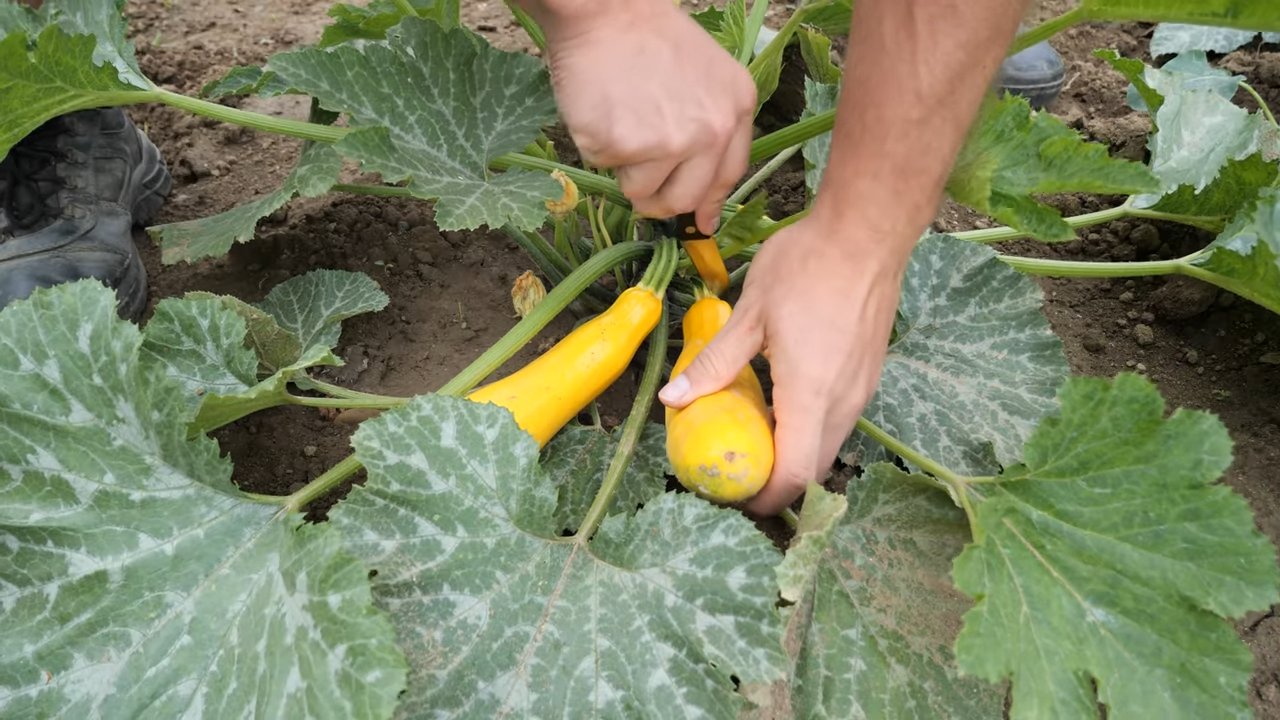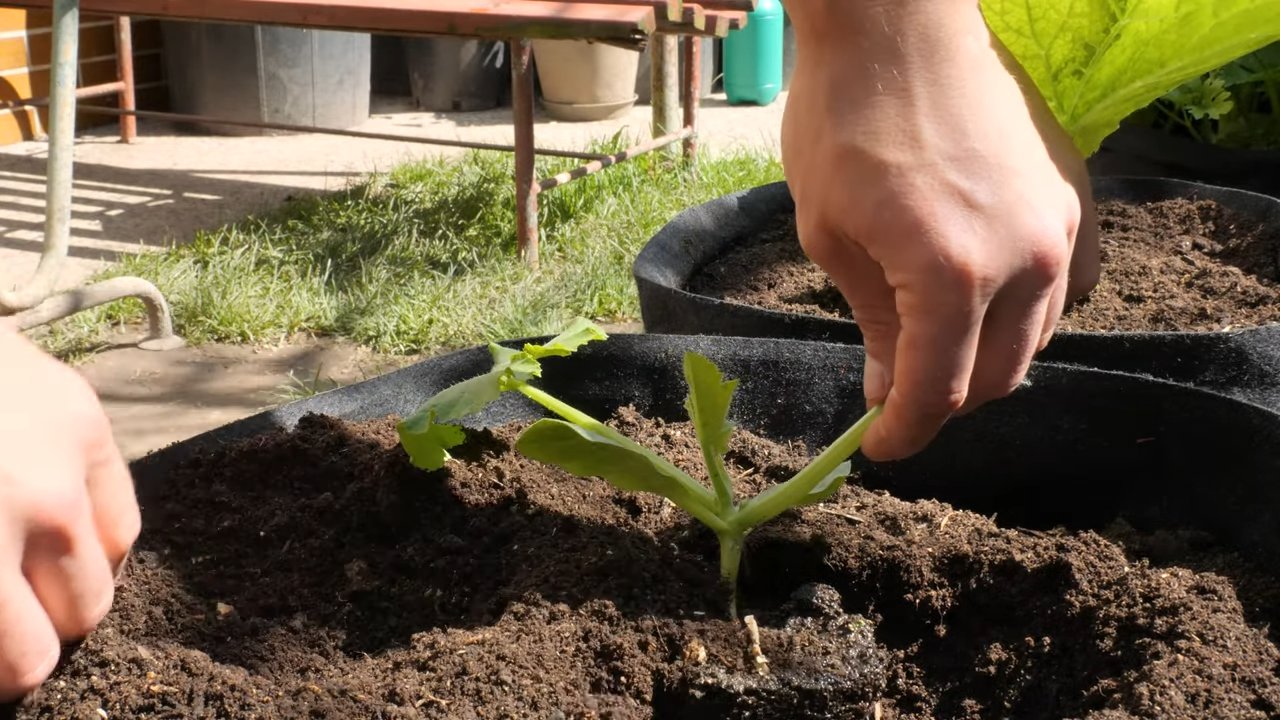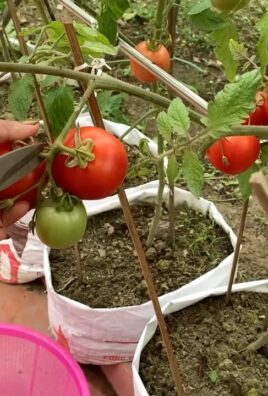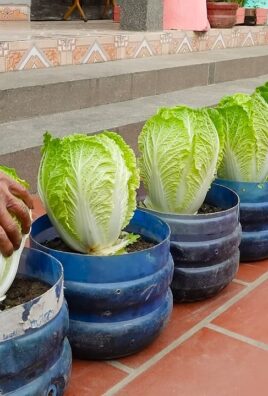Growing Zucchini in Grow Bags: Unlock a bountiful harvest, even without a sprawling garden! Have you ever dreamed of plucking fresh, vibrant zucchini straight from your own backyard, but thought you didn’t have the space? Well, dream no more! This DIY guide is your secret weapon to zucchini success, regardless of your garden’s size.
Zucchini, a member of the squash family, has a rich history, tracing back to Central and South America. For centuries, it’s been a staple in various cuisines, celebrated for its versatility and nutritional value. But let’s be honest, sometimes growing zucchini can feel like a battle against sprawling vines and unpredictable yields. That’s where the magic of grow bags comes in!
Why should you embrace this DIY trick? Because growing zucchini in grow bags offers a fantastic solution for urban gardeners, apartment dwellers, or anyone looking to maximize their harvest in a limited space. Grow bags provide excellent drainage, aeration, and temperature control, creating the perfect environment for your zucchini to thrive. Plus, they’re portable, allowing you to chase the sun and optimize growing conditions throughout the season. I’m excited to share my tried-and-true methods for cultivating healthy, productive zucchini plants in these convenient containers. Get ready to enjoy an abundance of delicious zucchini, from savory dishes to sweet treats, all thanks to this simple and effective DIY approach!

Zucchini im Pflanzsack anbauen: Dein umfassender DIY-Leitfaden
Hey Gärtnerfreunde! Ich liebe Zucchini. Sie sind so vielseitig und wachsen wie verrückt, wenn man ihnen die richtigen Bedingungen bietet. Und rate mal was? Du brauchst keinen riesigen Garten, um eine reiche Zucchini-Ernte zu erzielen. Pflanzsäcke sind die Geheimwaffe für alle, die wenig Platz haben oder einfach nur flexibel bleiben wollen. In diesem Artikel zeige ich dir Schritt für Schritt, wie du Zucchini erfolgreich in Pflanzsäcken anbaust. Los geht’s!
Warum Pflanzsäcke für Zucchini?
Bevor wir ins Detail gehen, lass uns kurz darüber sprechen, warum Pflanzsäcke eine tolle Option für Zucchini sind:
* Platzsparend: Ideal für Balkone, Terrassen oder kleine Gärten.
* Mobilität: Du kannst die Säcke leicht verschieben, um die Sonneneinstrahlung zu optimieren oder sie vor extremen Wetterbedingungen zu schützen.
* Bessere Drainage: Pflanzsäcke bieten in der Regel eine bessere Drainage als herkömmliche Töpfe, was für Zucchini, die keine Staunässe mögen, entscheidend ist.
* Weniger Unkraut: Die Erde im Pflanzsack ist isoliert, was das Unkrautwachstum reduziert.
* Einfache Handhabung: Sie sind leicht zu befüllen und zu bepflanzen.
Die richtige Vorbereitung ist alles
Bevor du loslegst, solltest du sicherstellen, dass du alles hast, was du brauchst. Hier ist eine Checkliste:
* Pflanzsäcke: Wähle Pflanzsäcke mit einem Volumen von mindestens 40 Litern. Größer ist besser, da Zucchini viel Platz für ihre Wurzeln benötigen. Stoffpflanzsäcke sind super, weil sie atmungsaktiv sind und die Wurzeln nicht so schnell überhitzen.
* Hochwertige Erde: Verwende eine gut durchlässige, nährstoffreiche Blumenerde. Du kannst auch Kompost oder organischen Dünger untermischen, um die Erde noch weiter anzureichern.
* Zucchini-Samen oder Jungpflanzen: Du kannst entweder Samen aussäen oder vorgezogene Jungpflanzen kaufen. Jungpflanzen sind einfacher, aber das Aussäen von Samen ist günstiger und macht Spaß!
* Dünger: Ein Langzeitdünger oder ein Flüssigdünger speziell für Gemüse ist ideal.
* Gießkanne oder Schlauch: Zum regelmäßigen Gießen.
* Mulch: Stroh oder Holzhackschnitzel helfen, die Feuchtigkeit im Boden zu halten und Unkraut zu unterdrücken.
* Pflanzstäbe oder Rankgitter (optional): Einige Zucchinisorten wachsen buschig, andere ranken. Wenn du eine rankende Sorte hast, brauchst du eine Rankhilfe.
Schritt-für-Schritt-Anleitung: Zucchini im Pflanzsack anbauen
Jetzt geht’s ans Eingemachte! Folge diesen Schritten, um deine Zucchini-Pflanzsäcke vorzubereiten und deine Pflanzen erfolgreich anzubauen.
1. Den Pflanzsack vorbereiten
1. Pflanzsack auswählen: Wie gesagt, wähle einen Pflanzsack mit mindestens 40 Litern Volumen. Stoffpflanzsäcke sind meine erste Wahl, aber auch andere Materialien funktionieren.
2. Standort bestimmen: Zucchini lieben die Sonne! Wähle einen Standort, der mindestens 6-8 Stunden Sonnenlicht pro Tag bekommt. Stelle den Pflanzsack dort auf, bevor du ihn befüllst, denn er wird ziemlich schwer, wenn er voll ist.
3. Drainage verbessern: Obwohl Pflanzsäcke in der Regel eine gute Drainage haben, kannst du noch ein paar Kieselsteine oder Tonscherben auf den Boden des Sacks legen, um sicherzustellen, dass das Wasser gut abfließen kann.
2. Den Pflanzsack befüllen
1. Erde mischen: Mische deine Blumenerde mit Kompost oder organischem Dünger. Das Verhältnis sollte etwa 2:1 (Erde zu Kompost) sein. Das gibt deinen Zucchini-Pflanzen einen guten Start.
2. Pflanzsack befüllen: Fülle den Pflanzsack zu etwa zwei Dritteln mit der Erdmischung. Drücke die Erde leicht an, aber nicht zu fest.
3. Gießen: Gieße die Erde gründlich, bis das Wasser aus dem Boden des Pflanzsacks austritt. Das hilft, die Erde zu setzen und sorgt für eine gleichmäßige Feuchtigkeit.
3. Zucchini pflanzen
Hier hast du zwei Optionen: Samen aussäen oder Jungpflanzen einsetzen.
Option 1: Samen aussäen
1. Samen vorbereiten: Du kannst die Samen über Nacht in lauwarmem Wasser einweichen, um die Keimung zu beschleunigen. Das ist aber kein Muss.
2. Aussaat: Mache mit dem Finger oder einem kleinen Werkzeug ein kleines Loch (ca. 2-3 cm tief) in die Erde. Lege 2-3 Samen in das Loch (falls nicht alle keimen) und bedecke sie mit Erde.
3. Gießen: Gieße die Erde vorsichtig, um die Samen nicht auszuspülen.
4. Warm halten: Zucchini-Samen keimen am besten bei warmen Temperaturen (20-25°C). Wenn es draußen noch kühl ist, kannst du den Pflanzsack mit einer Folie abdecken, um die Wärme zu speichern.
5. Geduld haben: Die Samen keimen in der Regel innerhalb von 7-10 Tagen. Sobald die Keimlinge ein paar Blätter haben, kannst du den schwächsten entfernen, sodass nur die stärkste Pflanze übrig bleibt.
Option 2: Jungpflanzen einsetzen
1. Pflanzloch vorbereiten: Grabe ein Loch in die Erde, das etwas größer ist als der Wurzelballen der Jungpflanze.
2. Pflanze vorsichtig herausnehmen: Nimm die Jungpflanze vorsichtig aus dem Topf und lockere den Wurzelballen leicht auf.
3. Einsetzen: Setze die Pflanze in das Loch und fülle es mit Erde auf. Die Oberseite des Wurzelballens sollte mit der Erdoberfläche abschließen.
4. Gießen: Gieße die Pflanze gründlich, um die Erde zu setzen und die Wurzeln zu befeuchten.
4. Pflege deiner Zucchini-Pflanzen
Die Pflege ist entscheidend für eine reiche Ernte. Hier sind die wichtigsten Punkte:
* Gießen: Zucchini brauchen viel Wasser, besonders während der Fruchtbildung. Gieße regelmäßig, am besten morgens, damit die Blätter über den Tag abtrocknen können. Vermeide Staunässe, da dies zu Wurzelfäule führen kann. Überprüfe die Erde regelmäßig. Wenn sich die oberste Schicht trocken anfühlt, ist es Zeit zu gießen.
* Düngen: Dünge deine Zucchini-Pflanzen alle 2-3 Wochen mit einem Flüssigdünger speziell für Gemüse. Achte darauf, die Anweisungen auf der Verpackung zu befolgen, um eine Überdüngung zu vermeiden.
* Mulchen: Bedecke die Erde um die Pflanzen mit Stroh oder Holzhackschnitzeln. Das hilft, die Feuchtigkeit im Boden zu halten, Unkraut zu unterdrücken und die Bodentemperatur zu regulieren.
* Schädlinge und Krankheiten: Achte auf Schädlinge wie Blattläuse oder Schnecken. Bei Bedarf kannst du biologische Schädlingsbekämpfungsmittel einsetzen. Mehltau kann auch ein Problem sein, besonders bei feuchtem Wetter. Sorge für eine gute Belüftung und entferne befallene Blätter.
* Bestäubung: Zucchini brauchen Bestäubung, um Früchte zu bilden. Wenn du wenig Bienen oder andere Bestäuber in deinem Garten hast, kannst du die Blüten von Hand bestäuben. Nimm dazu einen Pinsel und übertrage den Pollen von den männlichen Blüten (die ohne Fruchtansatz) auf die weiblichen Blüten (die mit einem kleinen Fruchtansatz).
* Rankhilfe (optional): Wenn du eine rankende Zucchinisorte hast, stelle sicher, dass sie eine Rankhilfe hat, an der sie sich festhalten kann. Das kann ein Rankgitter, ein Zaun oder ein Pflanzstab sein.
5. Erntezeit!
Die Ernte ist der schönste Teil! Zucchini wachsen schnell, also sei aufmerksam.
1. Re

Conclusion
So, there you have it! Growing zucchini in grow bags is not just a viable option; it’s a game-changer for gardeners of all levels, especially those with limited space or challenging soil conditions. We’ve explored the ins and outs of this method, from selecting the right grow bag and soil to nurturing your plants for a bountiful harvest. But why is this DIY trick a must-try?
Firstly, the improved drainage offered by grow bags is a lifesaver for zucchini, which are prone to root rot in overly wet soil. This alone can significantly increase your chances of success. Secondly, the portability of grow bags allows you to chase the sun, ensuring your zucchini plants get the 6-8 hours of direct sunlight they crave. And finally, the contained environment makes it easier to manage soil quality and prevent the spread of soilborne diseases.
But the beauty of gardening lies in experimentation! Feel free to explore variations on this method. For example, try companion planting in your grow bags. Marigolds can deter pests, while basil can improve the flavor of your zucchini. You could also experiment with different types of grow bags, such as those made from felt or breathable fabric, to see which works best for your climate and growing conditions. Consider adding a trellis to your grow bag to support the zucchini plant as it grows. This will help to keep the fruit off the ground and prevent it from rotting.
Another exciting variation is to try succession planting. Start a new batch of zucchini seeds every few weeks to ensure a continuous harvest throughout the growing season. This is especially useful if you have a short growing season or if you want to extend your harvest into the fall.
Don’t be afraid to get creative with your fertilizer choices, too. While a balanced slow-release fertilizer is a great starting point, you can supplement with liquid seaweed or compost tea to give your plants an extra boost. Just be sure to follow the instructions on the fertilizer packaging to avoid over-fertilizing.
Ultimately, the key to successful zucchini growing in grow bags is observation and adaptation. Pay close attention to your plants’ needs and adjust your watering, fertilizing, and pest control strategies accordingly.
We are confident that you’ll find growing zucchini in grow bags to be a rewarding and productive experience. It’s a fantastic way to enjoy fresh, homegrown zucchini even if you don’t have a traditional garden. So, grab your grow bags, seeds, and soil, and get started today!
We’d love to hear about your experiences! Share your tips, tricks, and photos of your zucchini grow bag gardens in the comments below. Let’s build a community of successful grow bag gardeners and inspire others to give this method a try. Happy gardening!
Frequently Asked Questions (FAQ)
What size grow bag is best for growing zucchini?
The ideal size grow bag for zucchini is typically between 15 and 25 gallons. This provides ample space for the roots to develop and allows the plant to access sufficient nutrients and water. While smaller grow bags might work for dwarf varieties, larger bags are generally recommended for standard zucchini plants to ensure optimal growth and fruit production. A larger bag also helps retain moisture, which is crucial during hot summer months.
What type of soil should I use in my zucchini grow bag?
A well-draining, nutrient-rich potting mix is essential for growing zucchini in grow bags. Avoid using garden soil, as it can become compacted in the confined space of the bag and hinder drainage. A good mix typically consists of equal parts compost, peat moss (or coco coir), and perlite or vermiculite. The compost provides essential nutrients, the peat moss or coco coir helps retain moisture, and the perlite or vermiculite improves drainage and aeration. You can also add a slow-release fertilizer to the mix to provide a steady supply of nutrients throughout the growing season.
How often should I water my zucchini plants in grow bags?
Watering frequency depends on several factors, including the weather, the size of the grow bag, and the stage of plant growth. Generally, you should water your zucchini plants whenever the top inch of soil feels dry to the touch. During hot, dry weather, this may mean watering daily or even twice a day. In cooler, wetter weather, you may only need to water every few days. Be sure to water deeply, allowing the water to drain out of the bottom of the bag. Avoid overwatering, as this can lead to root rot. A good way to check if your plants need water is to lift the grow bag. If it feels light, it’s likely time to water.
How much sunlight do zucchini plants need in grow bags?
Zucchini plants require at least 6-8 hours of direct sunlight per day to thrive. Choose a location for your grow bags that receives plenty of sunlight throughout the day. If you live in a particularly hot climate, you may want to provide some afternoon shade to prevent the plants from overheating. The beauty of grow bags is that you can easily move them to follow the sun or provide shade as needed.
What are some common pests and diseases that affect zucchini plants in grow bags, and how can I prevent them?
Common pests that affect zucchini plants include squash bugs, squash vine borers, aphids, and cucumber beetles. Diseases include powdery mildew, blossom-end rot, and root rot. To prevent these problems, start with healthy, disease-resistant seeds or seedlings. Regularly inspect your plants for signs of pests or diseases and take action promptly. Use organic pest control methods such as insecticidal soap, neem oil, or handpicking pests. Ensure good air circulation around your plants to prevent powdery mildew. Avoid overwatering to prevent root rot. For blossom-end rot, ensure consistent watering and add calcium to the soil if necessary. Companion planting with marigolds or nasturtiums can also help deter pests.
Do I need to fertilize my zucchini plants in grow bags?
Yes, zucchini plants are heavy feeders and require regular fertilization to produce a bountiful harvest. Start by incorporating a slow-release fertilizer into the potting mix when you plant your zucchini. Then, supplement with a liquid fertilizer every 2-3 weeks throughout the growing season. Choose a fertilizer that is high in phosphorus and potassium, as these nutrients are essential for fruit production. You can also use compost tea or fish emulsion as a natural fertilizer. Be sure to follow the instructions on the fertilizer packaging to avoid over-fertilizing.
Can I grow multiple zucchini plants in one grow bag?
While it’s technically possible to grow multiple zucchini plants in one large grow bag, it’s generally not recommended. Zucchini plants are quite large and require ample space to grow and produce fruit. Crowding multiple plants in one bag can lead to competition for resources, reduced yields, and increased susceptibility to pests and diseases. It’s best to plant one zucchini plant per grow bag to ensure optimal growth and fruit production.
How do I harvest zucchini from my grow bag garden?
Zucchini are best harvested when they are young and tender, typically when they are about 6-8 inches long. Use a sharp knife or pruning shears to cut the zucchini from the plant, leaving a short stem attached. Harvest regularly to encourage continued fruit production. Overripe zucchini can become tough and seedy, so it’s important to harvest them at the right stage of maturity.
Can I reuse the soil in my grow bags for growing zucchini next year?
While you can technically reuse the soil in your grow bags, it’s generally recommended to replace it with fresh soil each year. This is because the soil can become depleted of nutrients and may harbor pests or diseases. If you do choose to reuse the soil, be sure to amend it with plenty of compost and fertilizer to replenish the nutrients. You can also sterilize the soil by baking it in the oven or solarizing it in the sun to kill any pests or diseases. However, replacing the soil is the best way to ensure healthy and productive zucchini plants.
What are some good companion plants for zucchini in grow bags?
Companion planting can be a great way to improve the health and productivity of your zucchini plants. Some good companion plants for zucchini include marigolds, nasturtiums, basil, oregano, and garlic. Marigolds and nasturtiums deter pests, while basil and oregano improve the flavor of the zucchini and attract beneficial insects. Garlic can also help deter pests and prevent fungal diseases. Avoid planting zucchini near potatoes or fennel, as these plants can inhibit their growth.





Leave a Comment